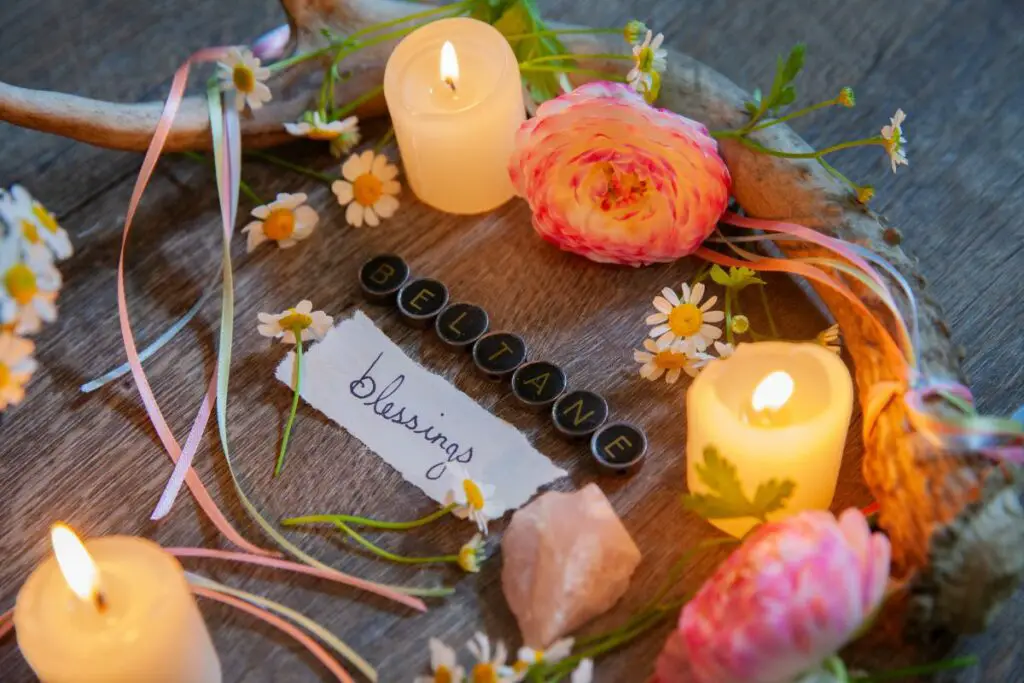Creating an altar for Persephone offers a personal space for reflection, devotion, and connection with the divine. As the ancient Greek goddess of spring and the queen of the underworld, Persephone embodies the cycle of life, death, and rebirth.
The process of assembling an altar for Persephone includes selecting items that are significant to her mythos, such as pomegranates, to represent her time in the underworld, and fresh flowers marking her return to the earth’s surface.
Through this act, you cultivate a deeper connection with Persephone, inviting balance, renewal, and growth into your spiritual journey.
Understanding Persephone
Before creating your altar, it’s essential to grasp who Persephone is and the powerful symbols that represent her.
Mythological Background
Persephone, known as the queen of the underworld and the goddess of spring, is a figure rooted in Greek mythology. Her story is one of duality, illustrating her roles as both the maiden of growth in springtime and the somber queen presiding over the deceased.
Persephone’s narrative is deeply entwined with the changing of seasons, linked to her abduction by Hades and the resulting agreement that leads her to spend part of the year in the underworld, and part above with her mother, Demeter.
Symbols and Associations
In representing Persephone on your altar, certain symbols and associations are important. Here are key elements related to her:
- Pomegranate: Often connected to the myth where Persephone eats pomegranate seeds, binding her to the underworld.
- Wheat: Symbolizes her mother, Demeter, and the fertility of the earth.
- Torches: Reflect her journey between the worlds of the living and the dead.
- Spring Flowers: Embody her return to the surface and the blooming of nature.
Elements such as candles, incense, or bowls for offerings can also be included. Color choices for your altar could be dark red, representing life and death, black for the underworld, and white for new beginnings and purity.
Designing Your Altar
When you create an altar for Persephone, think of it as crafting a personal and sacred space that resonates with her symbolism and energy. It’s a blend of aesthetics and function, where each item holds meaning and intention.
Selecting a Space
Choose a quiet and respectful area in your home where you can maintain a focus on spirituality and meditation.
This space should be free from clutter and distractions. It could be a dedicated room, a secluded corner, or part of your garden — anywhere that allows for reflection and connection with Persephone.
Altar Tools and Elements
Your altar for Persephone should include items that symbolize her aspects as the goddess of spring and the underworld. Here’s a structured list of tools and elements to consider:
- Cloth: An altar cloth in colors associated with Persephone such as black, red, or white.
- Symbols of Persephone:
- A framed image or statue of Persephone.
- Pomegranates or wheat sheaves to represent her roles in life and death.
- Altar Tools:
- An offering bowl for symbolic gifts.
- An incense burner for scents that evoke Persephone’s presence.
- Candles to bring light and focus to your altar.
- Natural Elements:
- Fresh flowers, particularly roses, as a nod to her connection with spring.
- Crystals such as obsidian or garnet that correspond with her underworld aspect.
Remember, placing these items with intention and respecting their significance is key to fostering a deep connection with Persephone through your altar.

Assembling the Altar
Before you begin assembling your altar for Persephone, ensure that you have all the necessary items at hand, such as pomegranates, wheat, and votive candles.
The process involves both physical arrangement and spiritual preparation to form a space that resonates with the essence of Persephone.
Cleansing and Consecrating
Prior to placing any items on your altar, it’s important to cleanse and consecrate the space.
Begin by physically cleaning the area where you will establish the altar, removing any clutter or debris.
Once the physical space is tidy, it’s time to energetically cleanse it.
You might want to burn sage or palo santo, allowing the smoke to wash over the area, which is believed to purify the space of negative energy.
- Suggested Cleansing Steps:
- Tidy the area: Clear the altar surface of any non-ritual items.
- Burn sage: Light sage and let the smoke cover the altar area.
- Set intention: As you cleanse, focus on your intention for the altar.
Arranging Offerings and Symbols
After cleansing, you’ll arrange the offerings and symbols on the altar representing elements associated with Persephone.
Lay out a cloth that resonates with her energy—perhaps something in a deep red or black.
Place symbols that represent Persephone, such as pomegranates for her time in the underworld, or flowers like roses to symbolize her return in spring.
- Offerings Layout:
- Center: Place a statue or image of Persephone as the focal point.
- Left Side: Arrange votive candles and crystals like obsidian or black tourmaline.
- Right Side: Set offerings of pomegranates, wheat, or other harvest-related items.
- Surrounding: Add personal items that connect you to Persephone’s energy.
Maintaining the Altar
To keep your altar for Persephone vibrant and energetically potent, it’s essential to stay committed to regular upkeep and respectful practices.
Regular Offerings and Rituals
Your ongoing relationship with Persephone can be nurtured through consistent offerings and rituals. It’s important to:
- Place fresh offerings such as pomegranates or flowers regularly, honoring Persephone’s myth.
- Remember to remove old offerings to prevent clutter and maintain purity.
- Engage in weekly meditations or prayers at your altar. This consistent practice maintains a strong spiritual connection.
Seasonal Adaptations
Align your altar with the cycles of the year to honor Persephone’s dual aspect as both the Queen of the Underworld and a Goddess of Spring.
- In spring and summer: Accentuate your altar with bright colors and live plants to celebrate her time on Earth.
- Come autumn and winter: Transition to darker tones and symbols like wheat to reflect her role in the underworld.
